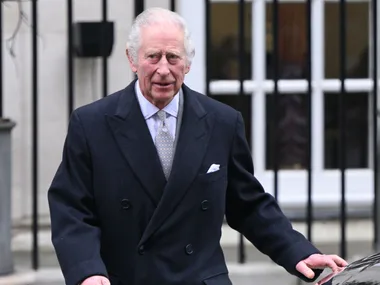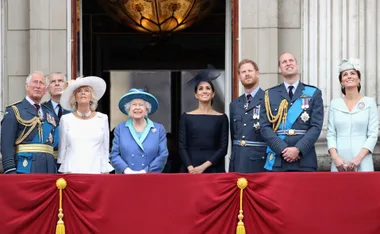The Duchess of Cambridge’s unorthodox birth plan is set to make history in more ways than one as she looks into ‘pain-free’ birthing techniques
As her July due date draws near, Duchess Kate has indicated they intend to break with tradition by having Prince William by her side during the birth.
While it is now considered quite normal (some might say, compulsory) for a father to be there as a support during the birth of his child, in royal circles it’s simply not done. Indeed, William will be the first royal dad in history to see his child born.
Prince Charles was busy playing polo during Diana’s delivery with William and while Queen Elizabeth was giving birth to Charles, Prince Philip was off having a hit of squash. Jolly good!
William and Kate don’t, however, plan to stray from the royal fold with either their choice of hospital (the Lindo Wing of St Mary’s Hospital, London, where Diana gave birth to Wills) or their medical team.
According toPeoplemagazine, Kate has chosen Alan Farthing as her doctor along with the Queen’s personal physician, Marcus Setchell. A royal insider described Setchell as “a lovely old-school gentleman who is very highly rated by the Queen.”
It is unlikely that Kate’s team of highly trained medics were the ones to recommend the alternative delivery methods this hip young royal is said to be considering.
Both water births and the hot-trending technique of hypnobirthinghave reportedly caught Kate’s interest, as she has confessed to having the jitters about the birth.
‘It would be unnatural if I wasn’t [nervous]. It’s just human, isn’t it?” she shared during a chat with fellow expectant mothers at London’s Hope House in February.
Hypnobirthing may just help her overcome some of her fear. According to clinical hypnotherapist Rhiannon Zavattiero, the breathing and self-hypnosis techniques of hypnobirthing are quite simple and easy to learn.
“It’s about learning how to manage your anxiety and relax yourself so that you’re focused on the birth rather than the pain,” says Zavattiero. “We really don’t like to use the term pain-free because there’s still a lot of effort and work that goes into giving birth, but it really does help to eliminate distress.”
Regardless of how the royal baby ends up arriving, one thing’s for sure: Kate and Wills are going to have a birth plan in place. So what will their birth plan look like and how do you write one?
Most expectant couples have some sort of agreed-upon ‘game plan’ written down to help them and their birthing team before, during and after their baby’s arrival.
To ensure that the parents, particularly the mum, feel they are completely in charge of the labour and delivery, a birth plan serves as a checklist that keeps everyone involved on the same page with regard to the desired style of delivery.
Of course, births often don’t go to plan and emergency situations can quickly take you from your aromatherapy-scented birthing pool to an operating theatre. But doctors and midwives still encourage pregnant women to make their wishes and desires known beforehand as they know it’s harder to make clear decisions during labour.
While the royal birth plan will more than likely include a lengthy legal agreement regarding confidentiality, the average person’s plan is more focused on factors such as preferred atmosphere and environment during labour, pain management and intervention.
It’s also important to document who will be present, how you would like to find out the sex of the baby (if unknown), who will cut the cord and what you’d like to happen immediately after the birth.
A good birth plan allows you to feel prepared and empowered and to focus on what’s important – the safe delivery of your precious bundle.






.jpg?resize=380%2C285)
.png?resize=380%2C285)



